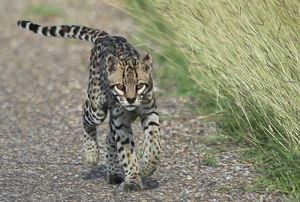Buoyed by the phenomenal success of last year’s habitat restoration effort, officials at Laguna Atascosa National Wildlife Refuge are seeking volunteers for another planting of native species at the refuge.
In early 2017, 34 acres were sown on a refuge plot in hopes of accelerating what can be a two-decade wait to fully re-establish native Tamaulipan thorn scrub.
By using an innovative technique of sheltering each seedling in a white plastic sleeve, the experiment showed a 93-percent survival rate for snake eyes, or devil queen; Texas torchwood; crucita or Christmas bush; trixis or American threefold; lantana; Berlandier croton; and manzanita, or Barbados cherry.
Previous habitat restoration plantings in the Rio GrandeValley showed a seedling survival rate of between 20 and 30 percent as white-tailed deer, nilgai, feral hogs, javelina, rats and rabbits mowed down the tender new plants before they had a chance.
Some plots had a success rate of zero.
This year, between 8 a.m. and noon March 10, volunteers will help U.S. Fish and Wildlife Service workers plant 30,000 seedlings inside the white tubes adjacent to the previous plot to create ocelot-friendly habitat.
By RICK KELLEY | Staff Writer





